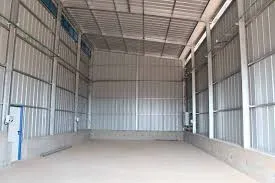- Afrikaans
- Albanian
- Amharic
- Arabic
- Armenian
- Azerbaijani
- Basque
- Belarusian
- Bengali
- Bosnian
- Bulgarian
- Catalan
- Cebuano
- Corsican
- Croatian
- Czech
- Danish
- Dutch
- English
- Esperanto
- Estonian
- Finnish
- French
- Frisian
- Galician
- Georgian
- German
- Greek
- Gujarati
- Haitian Creole
- hausa
- hawaiian
- Hebrew
- Hindi
- Miao
- Hungarian
- Icelandic
- igbo
- Indonesian
- irish
- Italian
- Japanese
- Javanese
- Kannada
- kazakh
- Khmer
- Rwandese
- Korean
- Kurdish
- Kyrgyz
- Lao
- Latin
- Latvian
- Lithuanian
- Luxembourgish
- Macedonian
- Malgashi
- Malay
- Malayalam
- Maltese
- Maori
- Marathi
- Mongolian
- Myanmar
- Nepali
- Norwegian
- Norwegian
- Occitan
- Pashto
- Persian
- Polish
- Portuguese
- Punjabi
- Romanian
- Russian
- Samoan
- Scottish Gaelic
- Serbian
- Sesotho
- Shona
- Sindhi
- Sinhala
- Slovak
- Slovenian
- Somali
- Spanish
- Sundanese
- Swahili
- Swedish
- Tagalog
- Tajik
- Tamil
- Tatar
- Telugu
- Thai
- Turkish
- Turkmen
- Ukrainian
- Urdu
- Uighur
- Uzbek
- Vietnamese
- Welsh
- Bantu
- Yiddish
- Yoruba
- Zulu
Dec . 13, 2024 02:24 Back to list
The Evolution of Warehouse Buildings A Look at Design, Function, and Technology
Warehousing has become an integral component of the global supply chain, acting as the crucial bridge between production and consumption. The evolution of warehouse buildings over the years reflects not only changes in technology but also shifts in the ways businesses operate. This article explores the history, design, functionality, and the future of warehouse buildings.
Historically, warehouses were simplistic structures, often just large open areas designed for storing goods. In the past, businesses relied heavily on manual labor for inventory management and distribution, which limited the efficiency of these spaces. The Industrial Revolution marked a turning point, as innovations in manufacturing led to an increase in the volume of goods produced and subsequently stored. Traditional wooden structures began to give way to brick and mortar, with robust designs that could accommodate larger quantities of goods.
As commerce evolved, so too did the design and functionality of warehouse buildings. In the late 20th century, the rise of e-commerce began to reshape the logistics landscape. The demand for faster delivery times necessitated the design of more sophisticated warehouses. Modern warehouses now often incorporate a variety of features aimed at efficiency, such as high ceilings for vertical storage, wider aisles for better movement of goods, and loading docks that can accommodate multiple trucks.
The design of warehouse buildings has increasingly focused on flexibility. Companies recognize that the nature of goods can change rapidly, and thus warehouses must be adaptable to shifting demands. Modular designs with movable shelving and reconfigurable storage spaces allow warehouses to pivot quickly without the need for substantial renovations. This flexibility has proven critical in industries where product life cycles are short, and responsiveness to market changes is crucial.
Technology has played a pivotal role in the transformation of warehouse buildings. The integration of automated systems, such as Automatic Storage and Retrieval Systems (AS/RS), conveyor belts, and robotic picking systems, has greatly increased efficiency and accuracy in inventory management. These technologies minimize the need for manual labor, reduce human error, and optimize space utilization. Moreover, sophisticated Warehouse Management Systems (WMS) help streamline operations by allowing for real-time tracking of inventory and facilitating better decision-making.
warehouse building

Sustainability has also become a significant consideration in warehouse design. As concerns about climate change and environmental impact grow, many companies are investing in green building practices. Features such as energy-efficient lighting, solar panels, rainwater harvesting, and sustainable building materials are increasingly common. LEED (Leadership in Energy and Environmental Design) certification is becoming a key goal for many new warehouse projects, reflecting a commitment to environmental stewardship.
In addition to sustainability, safety and ergonomics are key considerations in modern warehouse design. With the increasing automation of the workforce, ensuring the safety of both human workers and robotic systems is now a priority. Design strategies include wider walkways, enhanced visibility, and better signage to improve safety standards. Ergonomically designed workstations help reduce worker fatigue and injuries, contributing to a healthier and more productive workforce.
Looking to the future, the warehouse industry is set to undergo further transformations. The rise of artificial intelligence and machine learning could lead to smarter warehouses that anticipate demand and allocate resources more efficiently. Drones could be employed for inventory checks, monitoring of stock levels, and even for last-mile deliveries, further streamlining operations.
Moreover, the impact of global events, such as the COVID-19 pandemic, has underscored the need for warehouses to be resilient. The shift towards local sourcing and decentralized logistics may give rise to smaller, more localized warehouses, designed to facilitate rapid response to regional demands. As supply chains continue to evolve, the flexibility and adaptability of warehouse buildings will be critical to meeting future challenges.
In conclusion, warehouse buildings have evolved from simple storage facilities to complex, dynamic hubs integral to global commerce. As technology advances and new challenges arise, the design and functionality of these structures will continue to adapt. Future warehouses will likely reflect not only the demands of efficiency and productivity but also a commitment to sustainability, safety, and flexibility, showcasing an industry prepared to meet the needs of a rapidly changing world.
-
How Do Prefabricated Steel Structures Transform Modern Construction?
NewsJul.14,2025
-
How Do Prefabricated Metal Buildings Redefine Modern Construction?
NewsJul.14,2025
-
How Do Prefab Insulated Metal Buildings and Steel Structures Revolutionize Modern Construction?
NewsJul.14,2025
-
How Do Pre - Engineered Steel Structures Redefine Modern Construction?
NewsJul.14,2025
-
Advancing Modular Construction with Prefabricated Metal Structures
NewsJul.14,2025
-
Advancing Industrial Infrastructure with Prefabricated Steel Solutions
NewsJul.14,2025
Products categories
Our Latest News
We have a professional design team and an excellent production and construction team.












